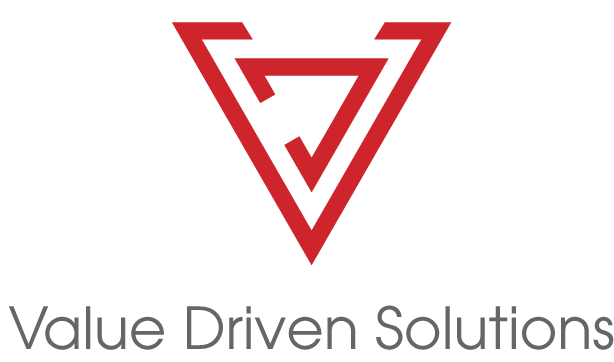Introduction:
In the ever-evolving landscape of the Consumer-Packaged Goods (CPG) industry, staying competitive requires not just agility but a strategic approach to performance measurement, team dynamics, accountability, and responsibility. Two essential frameworks that play a crucial role in this pursuit are Objectives and Key Results (OKRs) and Key Performance Indicators (KPIs). Let's delve into what these terms mean and how they contribute to organizational success.
OKRs (Objectives and Key Results):
OKRs are a goal-setting framework designed to align teams and individuals with broader organizational objectives. They consist of clear, ambitious Objectives and specific, measurable Key Results that indicate progress toward those objectives. OKRs are known for their flexibility and adaptability, encouraging teams to aim high and continuously improve.
Examples:
OKRs:
- Objective: Improve Product Innovation Key Results: Launch two new product lines in the next quarter. Achieve a 25% increase in customer satisfaction with new products. Secure placement in 200 new retail outlets.
- Objective: Strengthen Supply Chain Efficiency Key Results: Reduce lead time in the supply chain by 15%. Implement a real-time tracking system for shipments. Achieve a 20% reduction in excess inventory.
- Objective: Enhance Market Presence Key Results: Increase social media engagement by 30%. Expand distribution to 500 new retail outlets. Achieve a 20% increase in sales in the next quarter.
- Objective: Foster Sustainable Practices Key Results: Reduce packaging waste by 20% through sustainable materials. Achieve a 10% increase in the use of eco-friendly packaging. Obtain certification for environmentally friendly production practices.
- Objective: Optimize Operational Efficiency Key Results: Reduce production costs by 15%. Implement a new inventory management system. Achieve a 10% improvement in overall operational efficiency.
KPIs (Key Performance Indicators):
KPIs are quantifiable metrics used to evaluate the performance of a business, department, or individual against specific goals. Unlike OKRs, KPIs are more focused on monitoring ongoing business processes and outcomes. They provide a snapshot of performance and are crucial for making informed decisions.
KPIs:
- KPI: Sales Revenue Target: Achieve a 15% increase in sales revenue compared to the previous year. Measurement: Monthly tracking of sales figures.
- KPI: Customer Retention Rate Target: Maintain a customer retention rate of 85%. Measurement: Quarterly analysis of customer churn and retention.
- KPI: Cost per Unit Target: Reduce the cost per unit by 10%. Measurement: Monthly analysis of production costs and efficiencies.
- KPI: Distribution Reach Target: Expand product distribution to 300 new retail outlets. Measurement: Monthly tracking of new retail partnerships.
- KPI: Sustainability Index Target: Achieve a 15% improvement in the sustainability index. Measurement: Annual assessment of eco-friendly practices and certifications.
These examples illustrate how OKRs focus on achieving specific, ambitious objectives, while KPIs monitor ongoing performance in key areas critical to the success of a CPG company.
The responsibility for determining OKRs (Objectives and Key Results) and KPIs (Key Performance Indicators) typically falls on leadership and management teams within an organization. The process involves collaboration between executives, department heads, and key stakeholders to align organizational goals with measurable outcomes.
1. Leadership Team:
- CEO and Executives: The CEO and other top executives play a crucial role in setting overall strategic objectives for the organization. They define the overarching goals that will drive the company forward.
2. Department Heads and Managers:
- Department Heads: Leaders of various departments contribute to the cascading of objectives. They align their departmental goals with the broader organizational objectives.
- Managers: Frontline managers and team leaders may be involved in the process to ensure that objectives are practical, achievable, and aligned with the team's capabilities.
3. Cross-Functional Teams:
- Cross-Functional Collaboration: In many organizations, cross-functional teams are formed to ensure that objectives are well-rounded and consider multiple perspectives. This collaborative approach helps in creating comprehensive and achievable OKRs and KPIs.
4. Key Stakeholders:
- Input from Stakeholders: Involving key stakeholders, including customers, suppliers, and partners, can provide valuable insights. Their perspectives may contribute to setting objectives that align with broader industry trends and customer expectations.
5. OKR Champions or Coaches:
- Facilitators: Some organizations appoint OKR champions or coaches to facilitate the OKR-setting process. These individuals are responsible for guiding teams through the development of effective and measurable objectives.
While leaders often drive the process, successful OKR and KPI development require input from various levels and functions within the organization. The goal is to create a unified and transparent framework that aligns everyone toward achieving common objectives and measuring performance effectively.
Accountability and Responsibility: The Cornerstones of High Performance: In a high-performance team, accountability and responsibility are not just buzzwords but guiding principles. It’s where the rubber hits the road, and ownership is transparent.
- Accountability is the acknowledgment and assumption of responsibility for actions, decisions, and outcomes. It involves answerability and consequences for performance.
- Responsibility is the obligation to perform assigned tasks or activities. It goes beyond individual tasks to encompass the overall success of the team.
Why Accountability and Responsibility Matter:
- Enhanced Team Performance: When team members are accountable and responsible, there's a collective commitment to achieving goals, fostering a high-performance culture.
- Improved Problem Solving: Accountability encourages a proactive approach to problem-solving. Team members take ownership of challenges, driving innovative solutions.
- Increased Trust and Collaboration: Accountability builds trust among team members. Knowing that each member is responsible for their contributions fosters collaboration and a sense of reliability.
- Goal Alignment: Accountability ensures that individual efforts align with team and organizational objectives. This alignment is crucial for sustained success.
Fostering Mutual Accountability: In high-performance teams, accountability is a shared responsibility. Team members should not only rely on their leader but rather actively hold each other accountable for accomplishing their responsibilities. This builds trust, resiliency, and commitment amongst the team.
1. Regular Check-Ins: Establish a culture of regular check-ins where team members openly discuss progress, challenges, and support needed. This creates a collaborative environment where accountability is a collective effort.
2. Clear Expectations: Clearly define each team member's roles, responsibilities, and expectations. When everyone understands their part, it becomes easier to hold each other accountable for specific deliverables.
3. Constructive Feedback: Encourage a culture of constructive feedback. Team members should feel comfortable providing and receiving feedback, emphasizing growth and improvement rather than blame.
4. Recognition of Contributions: Acknowledge and celebrate individual and team achievements. Recognizing success reinforces a positive culture and motivates team members to consistently meet expectations.
Conclusion:
In the CPG industry, OKRs and KPIs serve as strategic compasses, guiding organizations toward success. Coupled with a culture of accountability and responsibility, they form the bedrock of high-performance teams, propelling businesses to thrive in the face of challenges and opportunities alike. As CPG professionals navigate the complexities of the industry, integrating these frameworks and principles becomes paramount for sustained growth and competitiveness.
Looking to enlist a specialist to guide your organization in cultivating a robust culture of accountability and responsibility centered on well-defined OKRs and KPIs for sustained growth and competitiveness?
Contact Value Driven Solutions today:
Value Driven Solutions
772-722-8811


